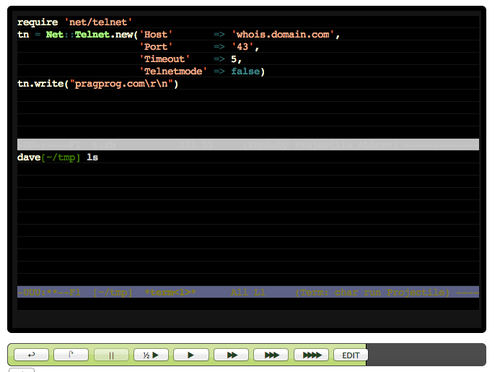Is this a way of fighting back?
The pragprog.com site tries to make it easy for our readers. We don’t want them to have to jump through hoops to register an account, post to forums, or note an erratum. We don’t want to ban external links—they are useful when people want to reference some resource or gist.
And, of course, that means we attract out share of spammers, adding links to external sites and products.
I spend a bit of time each week searching this out and deleting it. But I sometimes miss things, particularly when it is a site link in a user’s profile.
But Google notices, and it complains. Not to me, but to the owner of the site the links reference. That’s fair—the site owner paid someone to spam us, and Google complains to them, threatening to put their page rank in the crapper unless they remove the spam link.
But they can’t remove it, because it was added by some kid in link factory somewhere.
So instead they write to us. Here’s a typical email.
from: Mr Woc <webmaster@worldofchat.co.uk>
Hi,
I work for the company touchlineban.co.uk.
Your web page:
http://forums.pragprog.com/users/73905
is linking to our domain and we have been given an email from Google regarding our linking habits!
Since this letter from Google our site is suffering very badly, I need to get this link removed.
Therefore I politely request that you remove the link to our site touchlineban.co.uk immediately or as soon as is possible.
Many thanks for your cooperation in advance.
If you have any questions please contact me here:
webmaster@touchlineban.co.uk
Also if you have any other domain linking to us please can these links be removed too?
Kind regards
I get these emails quite frequently.
So, this time I responded:
I will remove the link if you give me the name of the company you employed to add it in the first place.
I got a wonderful response:
from: Woccy <webmaster@touchlineban.co.uk>
It was a long long time ago i have no idea sorry, ive got thousands of links and hired 100s of people over the years.
Far easier for you to remove them otherwise i just have to put the url on a disavow file, which is never good for any site, as I have to get rid of the links one way or another
Ive replied from the touchlineban email too so you know its my site.
Many thanks
Jc
Oh, my heart bleeds. The poor fellow. He’s hired 100s of people to spam sites like ours, and has polluted the web with thousands of links to his football management site. He can’t be expected to remember any details.
So, here’s my thinking. What would happen if I create a page on our site where I collect every single spam link I find, and leave those links active forever?
Would this cause some pain to the folks who spammed us in the first place?
And would it hurt our own page rank? Is there a way to let Google know what we’re doing?


